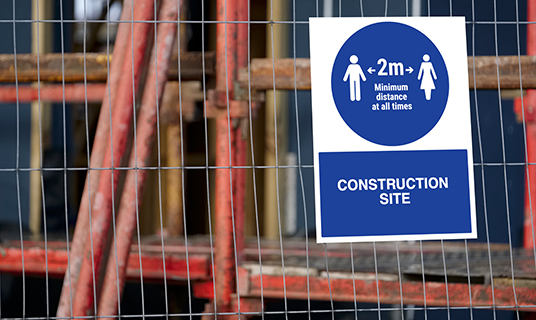A post-COVID picture of public sector procurement
The first Covid-19 lockdown marked a sudden and radical change for public sector housing and construction procurement.
The closure of offices and sites initially left local authority and housing association schedules in tatters, with public bodies unable to plan the completion of existing projects or to launch new projects. The preparedness of procurement staff, both on the supplier and buyer side, to carry out their respective duties was placed under significant stress.
As the crisis continued throughout the year, it became very obvious to us that contracting authorities and their suppliers would need to work in partnership to plan an eventual exit from relief and transition to new, sustainable operating models. This is what has been happening over the last eight months.
Indeed, LHC is taking a very positive view now, as so much of the disruption of 2020 has accelerated a process of change that will bring many benefits for the years ahead. LHC has certainly used this ‘pause button’ period to re-evaluate its own processes and to develop more effective procurement practices.
What we’ve learned through lockdowns is that construction and construction procurement have been able to innovate to cope with the crisis. We’ve discovered that, on the whole, the industry can act responsibly and fairly to support the response to Covid-19 and to protect jobs and the economy. Flexible working patterns have been successfully adopted and programmes of work have been extended wherever necessary to increase the ability of potential tenderers to engage with the processes.
Despite the occasional frustrations of video calls, webchats, webinars and screen shares, we have discovered that we can use these tools very successfully to undertake effective pre-tender engagement, without devoting endless hours travelling to physical meetings. Online engagement has opened the electronic door to greater participation.
We have also proactively sought opportunities to extend access for small and medium sized businesses, and to make public sector procurement work better for minority groups who were previously underrepresented. Young and entrepreneurial organisations are now also being provided with the opportunity to pitch new and exciting disruptive ideas to procurement organisations and break from the ‘tried and tested’ solutions.
Examples of this include our latest frameworks for architectural design, developed in association with Southwark Council, which now offer public sector procurement teams in London boroughs a new pool of talent to choose from – a selection of architectural practices who genuinely reflect the ethnicity, socio-economic backgrounds and other demographic makeup of the city, many of whom have not had the opportunity to access public sector work in the past. Our experience of developing these frameworks will undoubtedly influence all other procurement practices in future.
LHC has also introduced the Framework Alliance Contract (FAC-1) in all its procurements, with the aim of sharing objectives, introducing transparent performance measurement, aligning commercial interests and setting up collaborative governance, all of which promotes shared risk management. This approach is available to all public sector procurement teams and we hope it will be adopted widely. The key benefits of "alliancing" in this way is that is helps the whole construction supply chain to develop long-term relationships. FAC-1 provides a new style of framework agreement which achieves much higher satisfaction rates between all parties. Disputes are reduced, and alliance members can more easily work together to achieve greater efficiency, value outputs and cost savings.
New public contracts regulations in 2015 forced procurement teams to consider key issues such as sustainability, whole life costs, lifecycle analyses and social value. The new regulations were designed to lead to greater competition, greater savings and greater community benefit, without compromising on quality. And generally, much of this has happened.
But there is so much that still needs to be done to ensure ‘outcome-based procurement’ is better understood and more widely adopted. This will continue to be our focus for 2021, along with increased emphasis on pan-industry collaboration – the only way to ensure we truly build back better.


